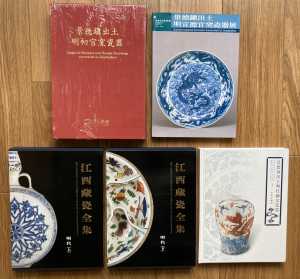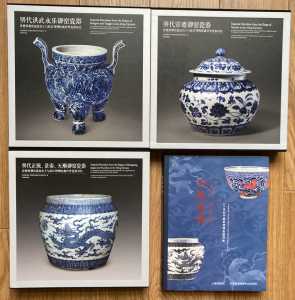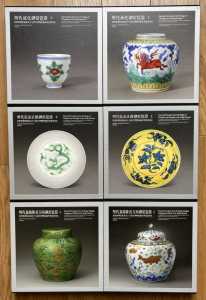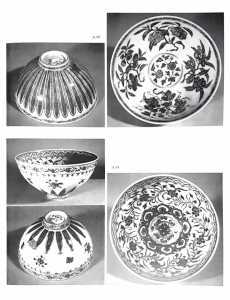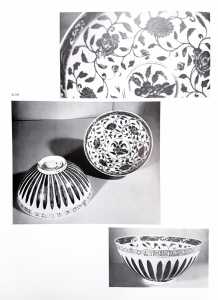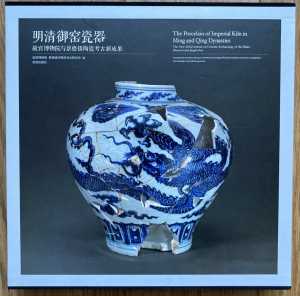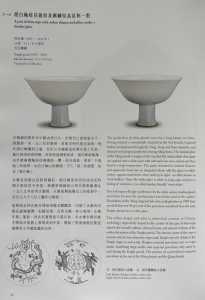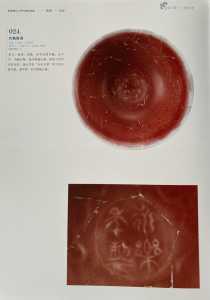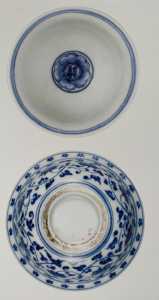The Chinese and Asian Art Forum. For Fans, Collectors and Dealers.
 Basic Rules For the BidAmount Asian Art Forum: Talk about whatever you want. You can even discuss and offer things that are for sale if they are authentic. Maximum image file size per post is 2 MB. Images of 700pxl x 700pxl are optimal if saved at a medium resolution. Be respectful of others and enjoy yourself. Click the YouTube link for a brief tutorial on using the forum. You can also EMBED Videos by cutting and pasting from You-Tube, Vimeo etc.
Basic Rules For the BidAmount Asian Art Forum: Talk about whatever you want. You can even discuss and offer things that are for sale if they are authentic. Maximum image file size per post is 2 MB. Images of 700pxl x 700pxl are optimal if saved at a medium resolution. Be respectful of others and enjoy yourself. Click the YouTube link for a brief tutorial on using the forum. You can also EMBED Videos by cutting and pasting from You-Tube, Vimeo etc.
NOTE: To post an item or add a new post, click open the category title from the FORUM LIST, and CLICK the Blue ADD TOPIC button.
Hi Brian -
Attached images of some publications on these Imperial excavations and the wares unearthed ...
Some of the above are out of print and therefore difficult to obtain. Others, such as the Palace Museum, Gugong, exhibition series in 2nd/3rd images are rather expensive ...
If you google ‘Purple Culture’ bookstore, a distributor base in Hong Kong, they have a some of the above ...
Stuart
Dear Giovanni,
My pleasure to answer, try to explain and help ...
Somewhat relieved to hear you are feeling better. I sincerely hope it will not be to long before you are fully recovered ...🤞🤞
With warmest regards,
Stuart
Dear Birgit, you are absolutley right. It is just what I meant; if judging by the perfection of the glaze, they look like brand new copies.
Regards
Giovanni
unfortunately in a month or so EBay and the like will be awash with brand new antique Ming bowls just like this one, remember the chicken cup a few years earlier. All of a sudden there were hundreds for sale.
These treasures are still out there hiding in plain sight.
@ming1449 @xin_fawis and all,
FWIW, I found a few more examples of these types of bowls with same foot rim characteristics from the The Ardebil shrine collection (Chinese porcelain collections in the Near East - The Ardebil shrine collection Vol II by T. Misugi). Even though the majority of pieces in this edition are in Black and white, it's nice to find examples with photos of the foot rims.
The second bowl pictured is a very close match to the bowl being auctioned at Sotheby's.
The bowls are listed as "Early 15th Century". The mark on the bottom is that of the Shah Abbas who had donated the entire collection to the shrine in 1611.
Hi Brian, Kaolin and all -
Apologies, I forgot to include this publication from the PM, Gugong series, which provides a good overview of these Imperial reconstructed wares, mostly Ming examples, recovered the 1980‘s up to 2016 ...
@kaolin has posted two good images of examples from the Ardebil Shrine, now housed in the National Museum of Tehran, for comparison purposes ...
Stuart
Bidding starts soon. Interesting how much this bowl will fetch. I have few questions of my interest, I am newbie but I am curious.
Guys in your opinion - very interesting how much possibly that small chip on a top rim can effect valuation price..?
I've been reading about Yongle blue & white porcelain and if few different sources on the internet they don't lie, there is just very few pieces marked as with Yongle mark, is it true that at Yongle period they pretty much never marked porcelain?
And question of my interest - when it comes, to such expensive & rare porcelain objects as this bowl which is for sale now (if Yongle rarely marked porcelain), like an example of my interest - let's say Xuande period - when selling 2 similar porcelain objects at auction house, let's say almost identical 2 objects. One porcelain object is marked and another one is not..Marked bowl will be more expensive then unmarked one? Or it just doesn't matter in real?
Thank you for a few lessons in advance :))
Kind regards
Audrius
Sorry guys, one more question:
https://www.christies.com/en/lot/lot-4916588
So what is a deal with Sotheby's estimations 300-500k usd for similar bowl?
I don't get this even considering that similar bowl was auctioned back in 2007...
Audrius
Hi Audrius -
In answer to your questions:-
1, No, marked Yongle pieces are well known but examples are relatively rare. Only three marked blue/white pieces exist, the so called ‘pressed-hand cup’, all held in the Palace Museum, Beijing, third image ...
All other marked examples are found on monochrome wares, usually found in the central interior, second image of a stem bowl excavated from the Imperial kiln site in 2013/14, although a few very rare pieces are known marked in the cavetto, first image. Two exceptional rare white monochrome ewers are also know with finely incised decoration, the lotus scroll which surrounds the neck with four blooms each of which supports a roundel inscribed with an archaic character, the four together read ‘Yongle nian zhi’ ...
2, This very much depends on rarity, condition and provenance, if any. There are far fewer authentic Yongle wares then Xuande so the former, generally, will fetched a higher price. But there are always exceptions ...
3, I think Sotheby’s are been ‘conservative’ with the estimate to entice buyers to bid on this piece. As mentioned by Xin, although this bowl has great story regarding its discovery, it has no provenance, which can have importance to some bidders ....
We will soon know ...
You may find the attached images of some help ...
Stuart
Thank you for your time, and excellent answer! Really super informative answer.
I think you did overlook few my questions (I am not trying to be rude or mean in anyway!) Would be highly appreciated if you could express your opinion on below (and other members)
Does't mark or no mark reflects possible final sale price if 2 identical porcelains sold? (when I say identical, it's just an example)
How do you think, how much possibly can draw down final sale price that small chip which is on a top rim? I am just trying to understand what possible devaluation can cause such small chip..? If to talk percentage wise. I do understand that every potential buyer - is different story when bidding and buying..And if EGO gets involved with couple of rich guys - chip doesn't make any sense in real :))) I hope you get my point what my question is.
Thank you for your very informative answer once again!
Kind regards
Audrius
@lucky Yes, usually the highest prices are paid for pieces that are authentically marked and of the period, generally speaking. I'm sure we could find some exceptions to that, but it is usually how it goes. As for a small chip and how much it detracts from the value, pretty much the market will decide that once it goes up for sale. How much damage, where the damage is, if it detracts from the presentation of the piece, if it can be easily repaired, how rare the piece is, all of this factors in, so I'm afraid there is not a simple answer to your question. However, you can start to get a sense of how damage affects the value just by looking at many examples and seeing what they sell for. I have seen very nice items that have very significant damage sell for 10% of what they might bring in nice condition. Maybe a small chip could knock the price down 25%, more or less, but it depends. I think the main thing is to study and observe as much as possible and to realize there are no certainties. One of our forum members has a fantastic plate being auctioned this week, I think maybe tomorrow at Christies. It was broken in half at some point. You can see the line running across it. However, it is a very rare, very large mark and period charger, and is quite beautiful. I think there is an example of another one like it that sold not too long ago, without that damage, so we will be able to compare the results and see. My feeling is that because of it's rarity and beauty, it will exceed it's high estimate and do very well, in spite of the damage. But we shall see soon enough. On the other hand, if you took a run of the mill rose medallion late 19th C plate and cracked it in half then glued it back together, my guess is you'd probably have a hard time giving it away.
Hi Audrius -
@johnshoe has given a good response to your questions - mine as follows ...
1, A marked example, for some, will always make a difference, but this is dependent on many factors, ie period, rarity, quality, painting style/subject, blue/glaze tones ext ...
2, Yes, the small chip will effect the price potential buyers are willing to pay, as the object is not ‘perfect condition’. Such damage use to effect prices markable, but not so much nowadays. However, how much such a defect has is, again, much dependent on the criteria given in the first answer - very rare, usually and desirable pieces may still bring significant prices at auction or when offered through a dealer ...
Stuart
I am watching some conspicuous consumption today.
Thanks for visiting "The BidAmount Asian Art Forum | Chinese Art"
If you sell on eBay, or have a shop feel free to post images and descriptions and links.
Check back often for discussion about the latest news in the Chinese art and antique world. Also find out about the latest Asian art auctions at Sotheby's, Christie's, Bonhams and Tajans.
Auction results for: fine porcelain, ceramics, bronze, jade, textiles and scholar's objects. As well as Japanese, Thai, Vietnamese and other Asian cultures.
Thank you,
Peter Combs
Topics and categories on The BidAmount Asian Art Forum | Chinese Art
Kangxi vases, Kangxi dishes and chargers, Kangxi ritual pieces, Kangxi scholar's objects, Qianlong famille rose, Qianlong enamels, Qianlong period paintings, Qianlong Emporer's court, Fine porcelain of the Yongzheng period. Chinese imperial art, Ming porcelain including Jiajing, Wanli, Xuande, Chenghua as well as Ming jades and bronzes.
The BidAmount Asian Art Forum | Chinese Art
A free Asian art discussion board and Asian art message board for dealers and collectors of art and antiques from China, Japan, Korea, Thailand, Cambodia, Vietnam and the rest of Asia. Linked to all of the BidAmount Asian art reference areas, with videos from plcombs Asian Art and Bidamount on YouTube. Sign up also for the weekly BidAmount newsletter and catalogs of active eBay listing of Chinese porcelain, bronze, jades, robes, and paintings.
The art of calligraphy - and for the ancient Chinese it certainly was an art - aimed to demonstrate superior control and skill using brush and ink. Calligraphy established itself as one of the major Chinese art forms during the Han dynasty (206 BCE - 220 CE), and for two millennia after, all educated men were expected to be proficient at it.
The Museum’s collections of Asian art span nearly five millennia and encompass the cultures of China, the Himalayas, India, Japan, Korea, and Southeast Asia. In 2007, the Museum launched an initiative to create dedicated galleries for the collection, beginning with a gallery for the arts of Korea ...
Chinese art is full of symbolism, in that artists typically seek to depict some aspect of a totality of which they are intuitively aware.
China Online Museum is the finest online museum of Chinese art. It features Chinese calligraphy, painting, ceramics, bronzes, carving, and other artworks.
Chinese Ceramics & Works of Art. Overview Upcoming auctions Contacts Auction results ... Christie’s sales of Chinese ceramics and works of art showcase centuries of Chinese history. Held throughout the year in London, New York, Paris and Hong Kong, they attract a wide audience of collectors and connoisseurs vying for pieces as diverse as ...
Explore Asian Art Week. Contact the Specialist Department. Chinese Paintings ... Senior Specialist, Head of Sale. [email protected]. Tel:+1 212 641 5760. Bid in-person or online for the upcoming auction:Fine Chinese Paintings on 10 September 2019 at New York. Bid in-person or online for the upcoming auction:Fine Chinese Paintings on 10 ...
Discover an abundance of must-see art from all corners of a vast continent at Christie’s NY Asian Art Week. From contemporary classical and Chinese paintings to works with exemplary provenance from the Art Institute of Chicago, our Rockefeller Paza galleries will be full of ancient treasures and contemporary masterworks in a salute to the vibrant arts of Asia.
Sold to benefit The Art Institute of Chicago’s Asian Art Acquisition Fund, the sale features 84 lots with a focus on Ming and Qing porcelains, and offers a rare insight into the taste for collecting Chinese ceramics and works of art in the Midwest from the end of the 19th century through the 1980s. Highlights include two Wanli wucai garlic-head vases, a Qianlong mark and period, blue and ...
Specialist, Chinese Paintings, Christie's London Dr Malcolm McNeill is a Specialist in Chinese Paintings at Christie’s, based in London. He previously worked as an assistant curator of the Chinese collections and the Victoria and Albert Museum in London, as a researcher at the British Museum, and as a translator and tour guide at the National Palace Museum in Taipei.
The Christie's Education 2020 Conference: The Chinese Art Market 18 Jun 2019 Christie’s Education is delighted to announce our first international academic conference in Asia which will take place in Hong Kong from 26-27 November 2020 at the Hong Kong Convention and Exhibition Centre and will run in parallel with Christie’s Hong Kong Autumn Auctions.
The summer Chinese Art sale in Hong Kong will feature works of art from several private collections, including Qing porcelains and textile from the collection of the legendary Chinese art dealer A. W. Bahr (1877–1959), fine gilt bronze Buddhist sculptures from an old Hong Kong collection, an East Asian collection of Qing dynasty wine cups and jades, and a Japanese collection of Song ceramics ...
Sotheby's Chinese Works of Art Department holds two auctions each year in London, New York, Hong Kong and Paris.
Chinese Art - View Auction details, bid, buy and collect the various artworks at Sothebys Art Auction House.
With more than 340 Chinese works of art dating from the Neolithic to the Republic periods, highlights of this sale include a selection of Qing Imperial monochromes from the collection of Arnold and Blema Steinberg, early ceramics from the Art Institute of Chicago and Chinese porcelain and works of art from the collection of Henry Arnhold.
Results: Sotheby's Asia Week achieved $52.4 million in six strong auctions, exceeding pre-sale estimates. With 76.5% of lots sold and 60.3% of lots surpassing high estimates, the Asian art sales at Sotheby's indicate continued collector interest in the finest works of art from China, India and and the Himalayas.
Today's sale of Important Chinese Art will proceed as planned with sessions at 10 AM and 2 PM EDT. Sotheby's will be monitoring the weather conditions throughout the day and will be available to coordinate alternative bidding options should conditions make it difficult for clients to attend the auction in person.
Bonhams Chinese Art department is renowned for offering the finest works of art representing the richness and breadth of China's artistic heritage, particularly Imperial porcelain, white and spinach green jades, cloisonné and Buddhist art. Specialised international auctions are held globally, including London, Hong Kong and San Francisco.
Bonhams : Chinese Works of Art We use cookies to remember choices you make on functionality and personal features to enhance your experience to our site. By continuing to use our site you consent to the use of cookies. Please refer to our privacy and cookie policies for more information.
Bonhams Fine Art Auctioneers & Valuers: auctioneers of art, pictures, collectables and motor cars. We use cookies to remember choices you make on functionality and personal features to enhance your experience to our site. By continuing to use our site you consent to the use of cookies. ... Chinese Art (US) General enquiries
Bonhams : Fine Chinese Art We use cookies to remember choices you make on functionality and personal features to enhance your experience to our site. By continuing to use our site you consent to the use of cookies. Please refer to our privacy and cookie policies for more information.
Bonhams Fine Art Auctioneers & Valuers: auctioneers of art, pictures, collectables and motor cars Bonhams : Asian Art We use cookies to remember choices you make on functionality and personal features to enhance your experience to our site.
Bonhams are international auctioneers of fine Chinese and Japanese art. We specialise in rare Imperial and Export Chinese ceramics and works of art, as well as Japanese ceramics, fine and decorative works of art from the Neolithic Period to the 20th century. View on map
Bonhams Fine Art Auctioneers & Valuers: auctioneers of art, pictures, collectables and motor cars. We use cookies to remember choices you make on functionality and personal features to enhance your experience to our site. By continuing to use our site you consent to the use of cookies. ... Asian Art Bonhams. Work. 22 Queen St.
